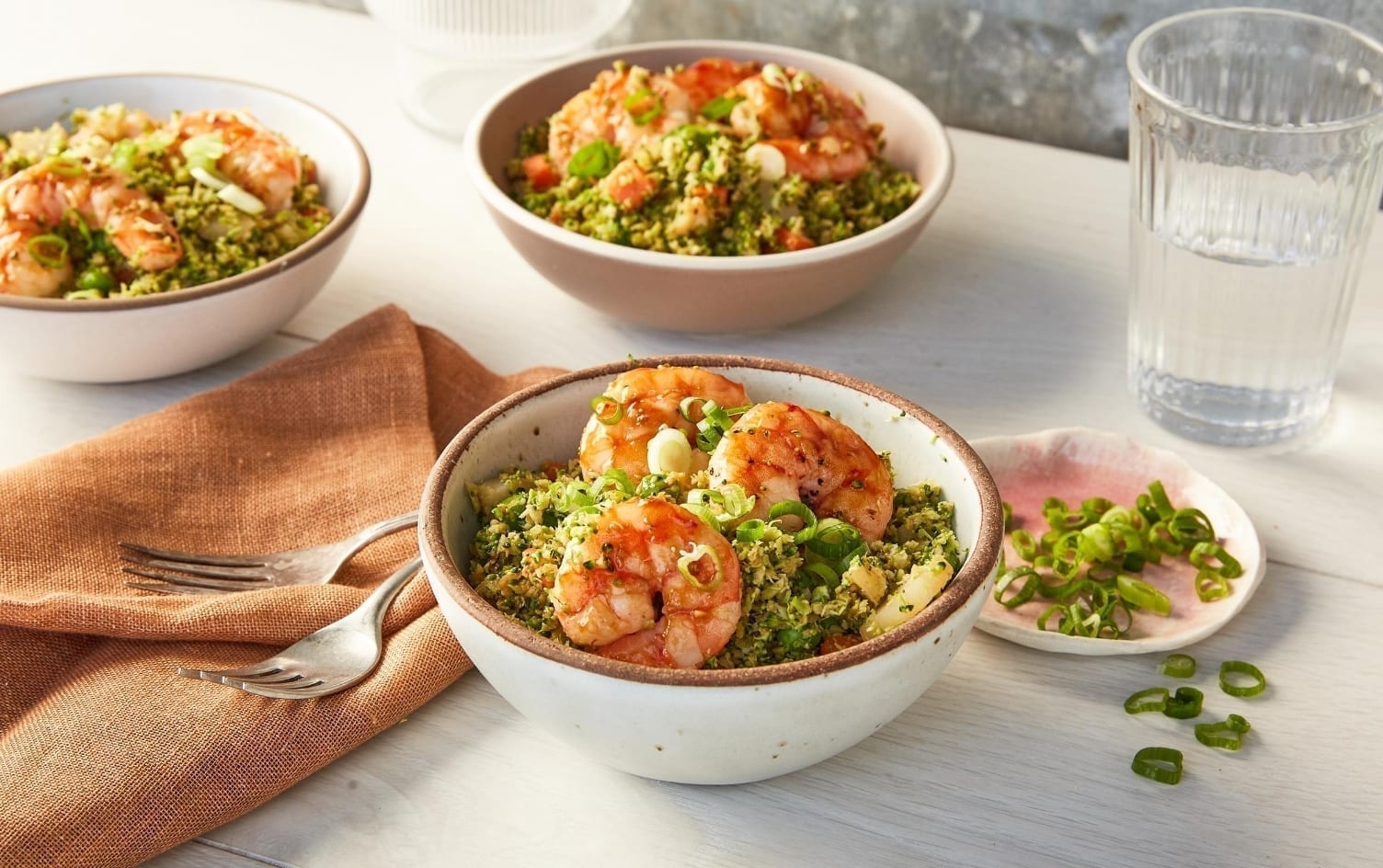If you’re trying to eat more vegetables, you probably already know about the wonders of cauliflower rice. It’s easy to swap it out in place of regular rice, increasing the fiber content of your dishes and decreasing carbohydrate content. But most people still don’t get their recommended 2 1/2 cups of veggies a day. One simple way to boost your intake, especially if vegetables aren’t your favorite food group, is to experiment with using riced vegetables for more than just a rice substitute.
Beets
Cut 2–3 large beets scrubbed (and peeled, if desired) into small chunks. In small batches, place the beets into a food processor fitted with the grating or knife blade. Process until the beets have the consistency of rice.
Cauliflower and Broccoli
Cut one head of cauliflower or 3–4 small crowns of broccoli into small chunks. Place them in a food processor and process until the veggies have the consistency of rice. This generally yields about 5–6 cups of riced veggies. Don’t overlook the stems, they can be riced, too and save on food waste.
Carrots
Cut three large carrots (washed, ends trimmed and peeled, if desired) into small pieces. In small batches, place the carrots into a food processor fitted with the grating or knife blade. Process until the carrots have the consistency of rice.
MAKE SWEET OR SAVORY OATMEAL
Oats are incredibly versatile, meaning you can mix pretty much anything into them and end up with a great result. That’s why recipe developer Emilie Blanchard likes to use an entire riced zucchini when making oatmeal. This is a particularly good option for those who don’t love the flavor of vegetables. “The best part is, the taste of the riced veggies is completely muted by the other delicious ingredients, and you can feel great about getting your veggies in with every bite,” says Blanchard. Riced veggies also work well in savory oatmeal recipes, especially riced cauliflower, which blends seamlessly with cooked oats. Riced carrots also work well for a “carrot cake”-style oatmeal.
Try mixing riced veggies in equal parts with whole grains, suggests Summer Yule, MS, RDN, a registered dietitian. Whole grains have health benefits like high fiber content, while “the veggies provide a really nice textural variation,” says Yule. “You’ll boost your veggie intake and lighten your dish, but my top reason for doing this is I think it tastes better.”
“If you make homemade meatballs or hamburgers, add riced veggies to increase your veggie intake,” suggests Aja Gyimah, RD. Try a 2:1 meat to riced veggie ratio with riced cauliflower, broccoli, carrots or, even better, a mix.
Throwing a handful of riced veggies into your protein shake or smoothie bowl can help you meet your quota for the day. “Use frozen plain riced cauliflower, which will pick up the flavors of the fruit you mix it with,” recommends Toby Amidor, RD. “It will also provide an icy texture to your smoothie.”
“Pick your preferred milk type to soak your cauliflower rice in, then sprinkle in warming spices like cinnamon, nutmeg or a premixed chai packet,” suggests Sergio Pedemonte, a certified personal trainer. “My favorite is to add coconut milk for the extra creaminess and healthy fats.”
To save time, “instead of chopping up a bunch of vegetables when you make egg muffins, throw in a handful of riced veggies,” suggests Gyimah. What’s more, this is a great way to use up any riced veggies you have leftover from another recipe. “These also make a great post-workout snack,” she adds.
“Fritters are a fantastic way to sneak in pretty much any veggie or leftover into a meal, especially when you have picky kids,” says Pedemonte. “I like to combine broccoli rice with mashed chickpeas and finely shaved red cabbage as my fritter base, topped with a sauce made from Greek yogurt and herbs.”
Blanchard recommends using cauliflower rice in homemade sushi. All you have to do is mix 1 cup (150g) riced cauliflower with 1 1/2 cups (225g) cooked quinoa and 1/2 cup (75g) hummus to create a healthier sticky rice alternative.
Making your own cauliflower pizza crust is super fast and easy, especially if you purchase pre-riced cauliflower, says Erin Palinski-Wade, RD. “Just prepare 1 1/2–2 cups (225–300g) of cauliflower rice in the microwave-based on the package instructions and then mix together with eggs, cheese and seasoning for a veggie-packed, low-carb pizza.”
Discover hundreds of healthy recipes — from high protein to low carb — via “Recipe Discovery” in the MyFitnessPal app. Save your favorites and log directly to your diary.




